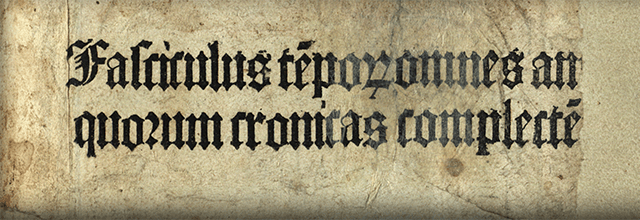Files
Download Full Text (244 KB)
Abstract
This paper considers the correlation between the popularity of Werner Rolevinck’s Fasciculus Temporum and other world chronicles, and the antisemitic tropes and blood libel accusations directed against Jewish communities in later medieval Europe.
The Fasciculus repeats many stock tales of Jewish ritual murder, including a relatively little-known story from Bern, Switzerland, that Rolevinck may have adapted from the Berner Chronik. This paper also considers the connection the first Spanish printing of the Fasciculus Temporum, in Seville in 1480, with the only known Jewish ritual murder accusation in Spain, which dates to 1490, and which in turn may have been instrumental in bringing about the expulsion of all Jews from Spain in 1492.
Publication Date
2022
Disciplines
European History | History | Jewish Studies | Medieval History | Medieval Studies
Persistent Identifier
https://archives.pdx.edu/ds/psu/38512
Recommended Citation
Bard, Rachel, "How Tales of Blood Libel Travel: Depictions of Jews in Fifteenth-Century European World Chronicles" (2022). Fasciculus Temporum. 7.
https://archives.pdx.edu/ds/psu/38512

Included in
European History Commons, Jewish Studies Commons, Medieval History Commons, Medieval Studies Commons



Comments
This essay is a research project written for Professor John Ott's Spring 2022 Medieval History seminar on PSU Library Special Collections' Malleus maleficarum and Fasciculus temporum codex.